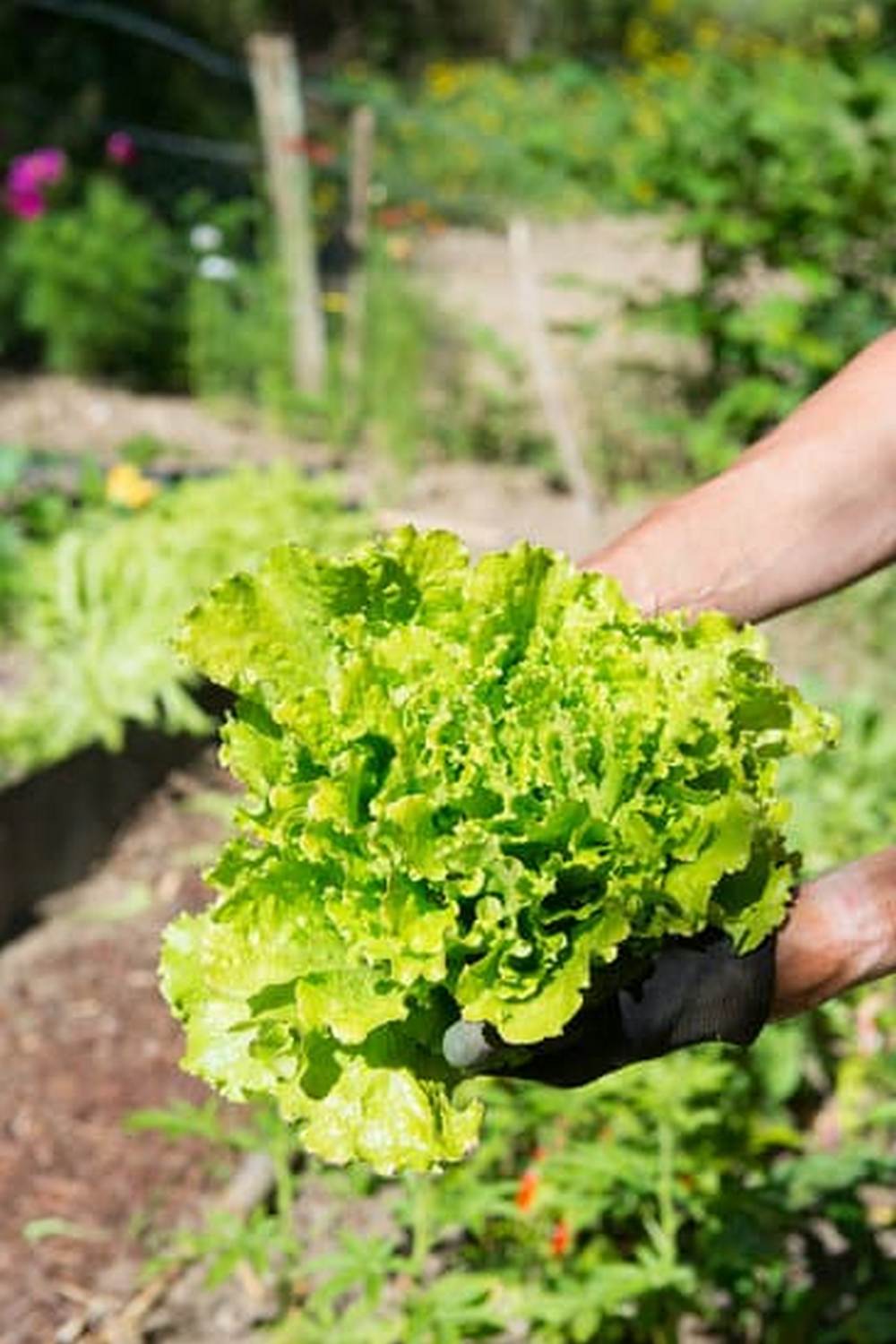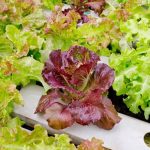Ground cover for vegetable gardens is a crucial aspect of maintaining the health and productivity of your garden. Whether you are a seasoned gardener or just starting out, utilizing ground cover can offer numerous benefits to your vegetable garden. From reducing erosion to conserving water and suppressing weeds, ground cover plays an essential role in creating a thriving vegetable garden.
In this article, we will explore the importance of ground cover for vegetable gardens and delve into the various benefits it can provide. We will also discuss the different types of ground cover suitable for vegetable gardens and provide a comprehensive guide on how to choose the right ground cover for your specific needs.
Additionally, we will share step-by-step instructions on applying ground cover in your vegetable garden, as well as common mistakes to avoid when using ground cover. Furthermore, we will offer tips for maintaining ground cover in vegetable gardens and showcase real-life success stories of vegetable gardens with ground cover. This comprehensive guide aims to equip you with the knowledge and tools necessary to make informed decisions about implementing ground cover in your own vegetable garden.
Benefits of Using Ground Cover in Vegetable Gardens
Ground cover for vegetable gardens offers numerous benefits to gardeners, making it an essential element in cultivating a successful and vibrant garden. One of the primary advantages of using ground cover in vegetable gardens is its ability to suppress weed growth.
By covering the soil surface, ground cover prevents sunlight from reaching weed seeds, inhibiting their germination and growth. This not only reduces the amount of time and effort spent on manual weeding but also minimizes competition for nutrients and water among plants, promoting healthier and more abundant yields.
In addition to weed suppression, ground cover plays a crucial role in moisture retention. By shielding the soil from direct sunlight and wind exposure, ground cover helps to maintain optimal moisture levels, reducing the need for frequent irrigation.
This is especially beneficial during hot and dry periods when water evaporation from the soil is heightened. Furthermore, ground cover can act as a protective barrier against erosive forces such as heavy rainfall or strong winds, preventing soil erosion and maintaining its structure.
Furthermore, using ground cover in vegetable gardens can contribute to improved soil health. Certain types of ground cover, such as organic mulches or living covers like leguminous crops, have the potential to enrich the soil with essential nutrients as they decompose or through nitrogen fixation.
This fosters a more fertile growing environment for vegetables, leading to better overall plant health and productivity. Ultimately, the benefits of using ground cover in vegetable gardens extend beyond weed control and moisture retention, encompassing enhanced soil quality and sustainable gardening practices.
Types of Ground Cover Suitable for Vegetable Gardens
When it comes to choosing ground cover for vegetable gardens, there are a variety of options available. Each type of ground cover offers different benefits and can be suitable for different types of vegetable gardens. Here are some of the most common types of ground cover that are suitable for vegetable gardens:
- Straw: Straw is a popular choice for ground cover in vegetable gardens because it helps retain moisture in the soil, suppress weeds, and regulate soil temperature. It also breaks down over time, adding valuable organic matter to the soil.
- Wood chips: Wood chips are another popular option for ground cover in vegetable gardens. They provide good coverage, help suppress weeds, and break down slowly, adding organic matter to the soil as they decompose.
- Clover: Clover is a living ground cover that can provide nitrogen to the soil through its roots. It also attracts pollinators and beneficial insects to the garden.
In addition to these options, there are many other types of ground cover that can be suitable for vegetable gardens, including landscape fabric, plastic mulch, and living mulches like low-growing herbs or flowering plants. The key is to choose a type of ground cover that will best meet the specific needs of your vegetable garden.
With so many options available, it’s important to consider factors such as your climate, the specific vegetables you’re growing, and your personal preferences when choosing the right ground cover for your garden. By taking these factors into account, you can select a type of ground cover that will promote healthy growth and productivity in your vegetable garden.
Ultimately,, finding the right type(s) from among these choices will ensure not only maximum results but optimally healthy produce.
How to Choose the Right Ground Cover for Your Vegetable Garden
When it comes to choosing the right ground cover for your vegetable garden, there are a few important factors to consider. The first thing to think about is the specific needs of your vegetable plants. Some vegetables may require more moisture, while others need better drainage. Consider selecting a ground cover that will help regulate soil moisture and temperature, and suppress weed growth.
Consider Your Garden’s Microclimate
It’s also crucial to consider the microclimate of your vegetable garden. Take note of the sunlight exposure, wind patterns, and the overall climate in your area. This information will help you determine which type of ground cover will thrive best in your garden. For example, if you have a sunny garden with high temperatures, you may want to opt for a heat-tolerant ground cover that can withstand these conditions.
Evaluate Maintenance Requirements
Another factor to consider is the maintenance requirements of the ground cover. Some options may require frequent trimming or mowing to keep them in check, while others may be low-maintenance. Assess how much time and effort you’re willing to invest in maintaining your ground cover before making a decision.
Seek Recommendations From Local Experts
Lastly, don’t hesitate to seek recommendations from local gardening experts or nurseries. They can provide valuable insights into which types of ground cover are best suited for vegetable gardens in your specific region. Local experts can also advise on any potential challenges or benefits associated with certain ground covers based on their experience working with other gardeners in the area.
Step-by-Step Guide on Applying Ground Cover in Your Vegetable Garden
Ground cover for vegetable gardens can provide many benefits, including weed suppression, moisture retention, and improved soil health. When applying ground cover in your vegetable garden, it’s important to follow the proper steps to ensure its effectiveness. Here is a step-by-step guide on how to apply ground cover in your vegetable garden:
1. Prepare the soil: Before laying down the ground cover, it’s important to prepare the soil by removing any existing weeds and loosening the top layer of soil. This will create a suitable environment for the ground cover to thrive.
2. Choose the right ground cover: There are various types of ground covers suitable for vegetable gardens, such as mulch, straw, or even living plants like clover or creeping thyme. Consider the specific needs of your vegetable garden when choosing the right ground cover.
3. Lay down the ground cover: Once you have selected the appropriate ground cover, evenly spread it across the surface of your vegetable garden. Make sure to leave space around your plants to allow for growth and airflow.
4. Secure the ground cover: To prevent the ground cover from blowing away or shifting, secure it with anchors such as landscape fabric pins or rocks. This will help maintain its effectiveness in controlling weeds and retaining moisture.
5. Monitor and maintain: Regularly inspect your ground cover for any signs of wear or damage, and replace it as needed. Also, be mindful of watering and fertilizing your vegetable garden to ensure that the ground cover continues to support healthy plant growth.
By following these steps for applying ground cover in your vegetable garden, you can create an environment that promotes plant health and reduces maintenance efforts throughout the growing season. Whether using organic mulch or living plants as ground cover, this method can greatly benefit your vegetable garden in numerous ways.
Common Mistakes to Avoid When Using Ground Cover in Vegetable Gardens
When it comes to using ground cover for vegetable gardens, there are certain mistakes that gardeners should avoid in order to ensure successful growth of their crops. Here are some common mistakes to watch out for:
Choosing the Wrong Type of Ground Cover
One of the most common mistakes is selecting the wrong type of ground cover for your vegetable garden. It’s important to choose a ground cover that is suitable for the specific needs of your vegetables. For example, some ground covers may not allow enough water or nutrients to seep through to the soil, while others may inhibit the growth of certain plants.
Not Providing Sufficient Maintenance
Another mistake is failing to properly maintain the ground cover once it has been applied. This can lead to issues such as overgrowth, which can smother your vegetable plants and prevent them from receiving adequate air and sunlight. It’s important to regularly trim and weed your ground cover to ensure that it doesn’t become a hindrance rather than a benefit.
Ignoring Soil Preparation
Some gardeners make the mistake of neglecting proper soil preparation before applying ground cover. It’s essential to prepare the soil by removing any weeds, aerating the soil, and adding organic matter before laying down any ground cover. Failing to do so can result in poor growth and development of your vegetables.
By being mindful of these common mistakes, you can effectively use ground cover in your vegetable garden without encountering unnecessary difficulties in maintaining a healthy and productive growing environment for your crops.
Tips for Maintaining Ground Cover in Vegetable Gardens
Maintaining ground cover in vegetable gardens is essential to ensure the health and productivity of your garden. Proper maintenance helps in weed control, moisture conservation, and soil temperature regulation, making it an integral part of successful gardening. Here are some tips to help you maintain ground cover in your vegetable garden effectively.
Firstly, regular inspection and maintenance are key. Check your ground cover regularly for any signs of weed growth or damage. Pull out any weeds that may have sprouted through the cover and replace any damaged sections promptly. This will help to prevent weed competition and maintain the integrity of the ground cover.
Secondly, ensure proper irrigation under the ground cover. It’s important to water your vegetable plants adequately without letting the ground cover interfere with the watering process. Use soaker hoses or drip irrigation systems to ensure that water reaches the roots of your plants without pooling on top of the ground cover, which can lead to mold or mildew growth.
Lastly, consider using organic mulch as a form of ground cover for your vegetable garden. Organic mulch not only helps suppress weed growth but also adds nutrients to the soil as it breaks down. This type of ground cover can be both functional and aesthetically pleasing, enhancing the overall look of your garden.
Overall, maintaining ground cover in vegetable gardens is crucial for promoting healthy plant growth and improving soil quality. By following these tips, you can ensure that your ground cover serves its purpose effectively while keeping your vegetable garden thriving.
| Tips | Benefits |
|---|---|
| Regular inspection and maintenance | Weed control |
| Proper irrigation | Moisture conservation |
| Use of organic mulch | Nutrient addition to soil |
Success Stories
Successfully implementing ground cover for vegetable gardens can result in a thriving and productive garden. One success story comes from a small-scale organic farm in Oregon, where the use of straw mulch as ground cover has led to a significant increase in the health and yield of their vegetable crops.
By using straw mulch, the farm was able to effectively suppress weed growth while also conserving soil moisture, leading to healthier plants and higher yields. Additionally, the breakdown of straw mulch over time added valuable organic matter to the soil, further improving its fertility.
Another success story comes from a backyard vegetable garden in suburban New Jersey. The garden’s owner chose to use living ground cover plants such as clover and creeping thyme to protect their soil and provide various benefits for their vegetables.
Not only did the living ground cover provide natural weed suppression, but it also attracted beneficial insects like pollinators and predatory insects that helped control pest populations in the garden. The result was a visually appealing garden with improved soil structure and less reliance on chemical pesticides.
In both of these cases, the successful implementation of ground cover for vegetable gardens resulted in healthier plants, increased yields, and reduced maintenance requirements. These real-life examples demonstrate the positive impact that choosing the right ground cover can have on the overall success of a vegetable garden. By learning from these success stories and applying similar techniques, vegetable gardeners can also experience the numerous benefits that come with using ground cover in their own gardens.
Conclusion
In conclusion, ground cover for vegetable gardens offers numerous benefits and is an essential component for successful gardening. The use of ground cover helps to suppress weed growth, retains moisture in the soil, prevents erosion, improves soil health, and enhances overall garden aesthetics. By choosing the right type of ground cover and following proper application and maintenance techniques, gardeners can experience increased yields, healthier plants, and reduced maintenance labor.
It is important to consider the specific needs of your vegetable garden when selecting the right ground cover. Factors such as climate, soil type, watering requirements, and sunlight exposure should all be taken into account. By carefully assessing these factors and choosing a suitable ground cover variety, gardeners can create an optimal environment for their vegetables to thrive.
Furthermore, success stories from real-life examples showcase the positive impact of using ground cover in vegetable gardens. These stories demonstrate how implementing ground cover has led to impressive yields, reduced labor efforts, improved soil quality, and overall garden success. With proper research and planning, gardeners can make informed decisions about which ground cover options will best support their specific vegetable garden needs.
Ground cover for vegetable gardens is not just a trend but an important tool that can significantly improve the health and productivity of your garden. By taking advantage of the benefits offered by ground cover and avoiding common mistakes while maintaining it properly could ensure a flourishing vegetable garden for years to come. So go ahead and explore the various options available until you find the perfect one for your unique gardening needs.
Frequently Asked Questions
What Is Best Cover for Vegetable Garden?
The best cover for a vegetable garden would be a mulch like straw, wood chips, or dried leaves. These materials help retain moisture, suppress weeds, and improve the soil as they break down.
What Are the Best Cover Crops for Vegetable Gardens?
Some of the best cover crops for vegetable gardens include clover, winter rye, and hairy vetch. These crops help prevent erosion, improve soil fertility, and suppress weeds while also attracting beneficial insects.
What Is the Best Low Maintenance Ground Cover?
The best low-maintenance ground cover would be something like creeping thyme, pachysandra, or succulents. These plants require minimal care once established and provide effective weed control while adding visual interest to the landscape.

If you’re looking to get into vegetable gardening, or are just looking for some tips on how to make your current garden better, then you’ve come to the right place! My name is Ethel and I have been gardening for years. In this blog, I’m going to share with you some of my best tips on how to create a successful vegetable garden.





